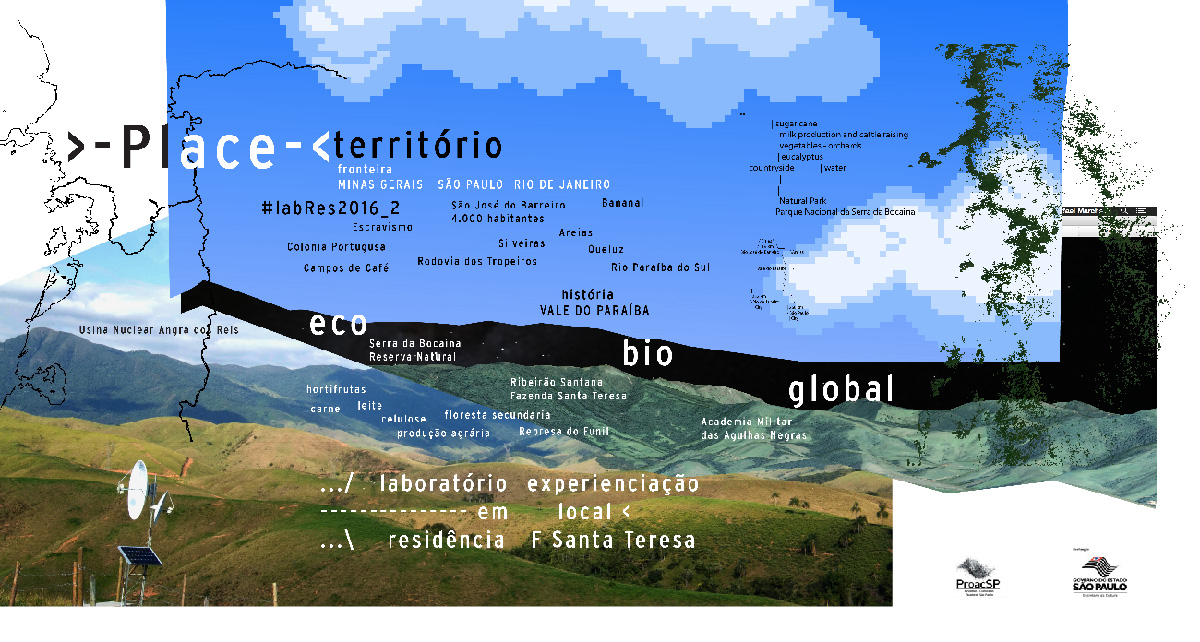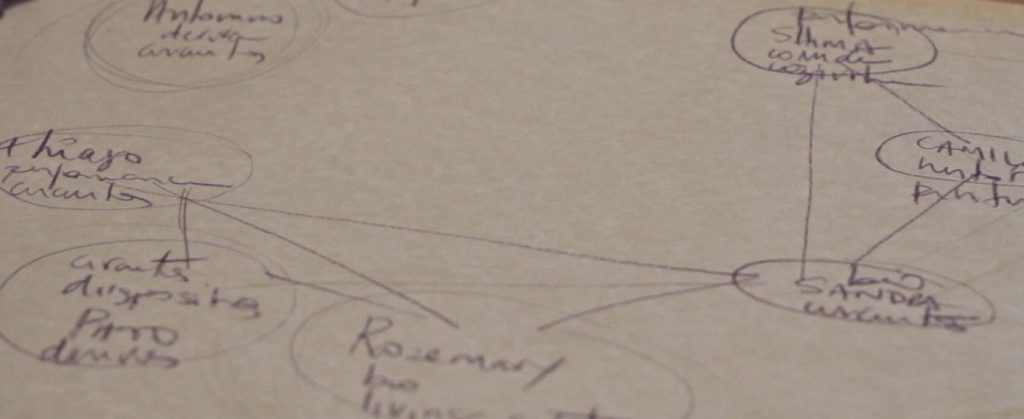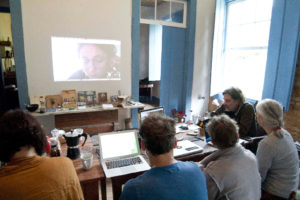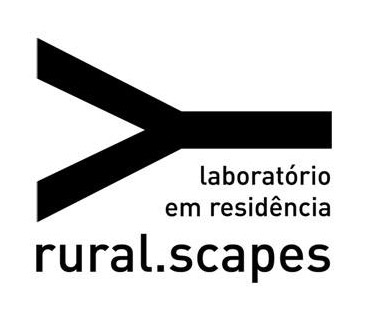selection #labRes2016_2

Juri selection text
Beyond the obvious tasks such as reading proposals, scrutinizing portfolios and interviewing candidates, the main goal for the jury was to conjugate and reconcile projects in order to compose an organic group where possible relationships and fruitful challenges between projects can be expected to happen. Our main challenge was, indeed, how to really evaluate social, political and economic potentials, and predict necessary adjustments or potential frictions?



In order to literally stimulate the promising scapes to grow and flourish, and to cope with rural.scapes’ principal preoccupations, the jury was intuitively looking for projects that promise to combine micro-politics with the glocal, sustainability and ecological realism with transhistorical technicity, or queer politics with trans-species sensibilities. We imagined to find artistic practices that could a priori link contradictory medialities and materialities, including non-human agency of bacterial, plant or animal life, mineral longevity, electronic, audiovisual or computational devices, or post-digital mapping. But we also hoped to favour practices beyond the audiovisual trust which would explore tactility, olfaction or taste, and that unfold less as objects than as microperformative challenges to their environment. And above all: the jury wanted to be sensitive to projects that include mutual learning, non-linear community action, and – a certain degree of understanding of this specific context.
When selecting the candidates for a time/space of one month of remote experimentation, productive quietness and forced cohabitation, both grounded and airy-fairy thoughts crossed our minds in an attempt to provoke unlikely encounters and hybrids: Would urban bicycle fashion turned into art be equally ‘green’ and fancy on muddy tracks and stony roller coaster rides? To whom would land art produced at Santa Teresa be destined, who should maintain it, or should ephemeral works just rot and go back to ‘nature’? Are queer or post-porn politics transposable to ‘naturally conservative’ social environments? Is the current philosophical frenzy of ‘trans’ aesthetics (species/kingdoms/races/classes/gender etc.), supposed to be so(oooo) contestational in symbolic art, really as subversive in situations where, quite practically, ducks, goats, chicken, humans, ants, exuberant feces, microbiomes, ‘invasive’ or ‘native’ species, antenna, wifi rooters, piezoelectrics and pharmacology fuse? As jury members, sharing our thoughts with rural.scapes’ founders, it was inevitable to wonder how the applicants conceived the approach to the local community, when systematically suggesting art and tech workshops or participatory projects, with sometimes little self-critical frame. When thinking about the possible interactions between artists and community and between resident artists we were mostly intrigued to foresee which questions could be stimulated in such an ad hoc art community settlement.
After an intense week of studying the manifold proposals in depth, eight artists were selected to be invited for the forthcoming residency in October. Beside the artistic and poetic quality of the proposals, other selection criteria were the adequacy of the project in relation to the residency’s objectives, the possible implementation into the local context, as well as the concrete feasibility within the given framework and its potential to create fruitful connections to projects of other selected artists. While the farm itself is a hybrid living system, several proposals likewise integrated diverse biological agency and electronics, letting the jury to think of this time/space of 30 days equally as a hybrid ‘circuit’, as a meta-system between rural dynamics and information technologies.


The chosen projects are:
Rosemary Lee – Mapping the Wasp: Rosemary envisions a display system for interactions between plants, animals, minerals, people and machines, based on a survey of the different species occurring around Fazenda Santa Teresa, and highlighting the unique qualities of the local biome. Her aim is to raise awareness that interconnections between different living beings and their environment cannot be reduced to the coexistence between human and non-human organisms, but imply a larger political conversation regarding trans-species relationships.
Tiago P. L. Rubini – Sonification of Tactical Bodies (Sonorização de Corpos Táticos): Tiago will address gender political issues, especially related to violence towards transgender people. His project aims to develop poetic guerrilla techniques to be applied in the countryside and elsewhere, in order to function as alarm systems for vulnerable minorities. From a ‘post-porn’ perspective, he will create sound micro-systems, and also include organic elements to possibly grow devices literally. Beyond the gender political aspects, his works expands the scope of human interaction to integrate intersections with other beings, and to question human exceptionalism to be contrasted with our own status as ‘multi-species beings.’
Marcio Hirokazu Shimabukuro – aka Shima – Habitat II: “We are what we eat!” – this key statement paves the way for the artist Shima to understanding the kitchen as a starting point for a daily and 30 days long performative process during which nutrition directly influences physiology and psychology. Shima proposes an ongoing procedural exchange with Dona Cida, Santa Teresa’s master cook and specialist in tropeiro cuisine and natural medicine, becoming her assistant. The daily performances will include residents, and equally visitors during the open farm events. This proposal may strongly impact on the group’s daily experience and transform, in the most material and spiritual sense, all other art practices. In this exchange, an art/cookbook will be produced.
Camila Soato – Rudimentary Technology of Mockery Paintings: Producing inks and pigments exclusively from organic matter found on and around the farm, and easels and frames from collected materials, Camila proposes to get involved in popular imaginations of the region, collecting stories, tales and local anecdotes, to finally create a series of paintings that aim at highlighting rural and small-town culture. Taking local daily life as a source, and experiencing inhabitants beyond just frugal conversation, Camila wants to make complicity the very vector to share comic and even embarrassing moments, represented in her humorous grotesque imaginary.
Sandra De Berduccy /aruma – Llimphiri: Electrochemical Variations (Llimphiri: Variaciones Electroquímicas). Llimphiri names a series of textile art works that result from electrochemical experiences based on dynamics between acid and alkaline media that generates electricity. Departing from previous experimentation with natural dyes, Sandra will research and experiment with colors and shades derived from local plants, insects and detritus found in the neighbourhood of the Fazenda Santa Teresa, as well as in the Serra da Bocaina National Park. The project emphasizes the aesthetic potential of each local environment, with its human inhabitants and their skills, stressing the importance to preserve often unexplored rural technologies. Her tinctures equally depend on the preservation of human traditions and addressing the issue of conservation and regeneration of native flora.
DeCo Nascimento & Tatiana Travisani – Intimate Topographies (Topografias Íntimas): DeCo and Tatiana’s project is based on daily hiking excursions to collect materials of all kinds to let soundscapes emerge. As a starting point for their audio-visual compositions, mapping workshops will be offered, where local inhabitants will talk about and map their daily itineraries and turn them into cognitive maps, correlated with topographic drawings in order to convert these maps into different medialities. Manifold results are envisioned, such as a composite media installation and an audiovisual performance to happen during the open farm events.
Patricio Dalgo – Sound Drifts (Derivas Sonoras): Patricio will offer open workshops involving the local community, especially children and teenagers, proposing playful interactions including field recordings, storytelling and the creation of instruments made out of waste materials. This repertoire of ‘non-tempered’ sounds produced by experimental instruments should then be translated into the larger environmental scale, using larger landscapes for alternating silence and noise, and resulting in audibly interaction with the geography.
Mariela Cantú – critic in residence.
The jury is much looking forward to see, hear, smell, taste and touch rural.scapes’ 2016 experiments, and to imagine them as a rural fertilizer, social and technological incubator. In the middle of the current dreadful political turmoil that Brazil faces, it is seducing to imagine that this (apparently) “bucolic” countryside can be a place where to experiment new ways of resistance and change. After all: couldn’t it be ‘radical’, and both socially and artistically efficient, then, to remind people that their ‘humanity’ needs to be re-examined in the light of their own limitations, of the anthropocene, and of the vital need of negotiation with elements and actors ‘beyond us’, when faced with the ‘grandeur’ of nature? No ‘green cubes’ needed here…
All of a sudden, Dona Cida’s voice echoes from the kitchen: “Why is everyone so quiet?” After all these days hearing our voices rising from the dining room in “multi-language” mode of debates and laughter, this silent moment of each one of us working on our computers may ‘sound’ indeed too silent. But the smells blowing from the kitchen remind us that this introspective time will soon “collide” with another round of noise and corporeality.


